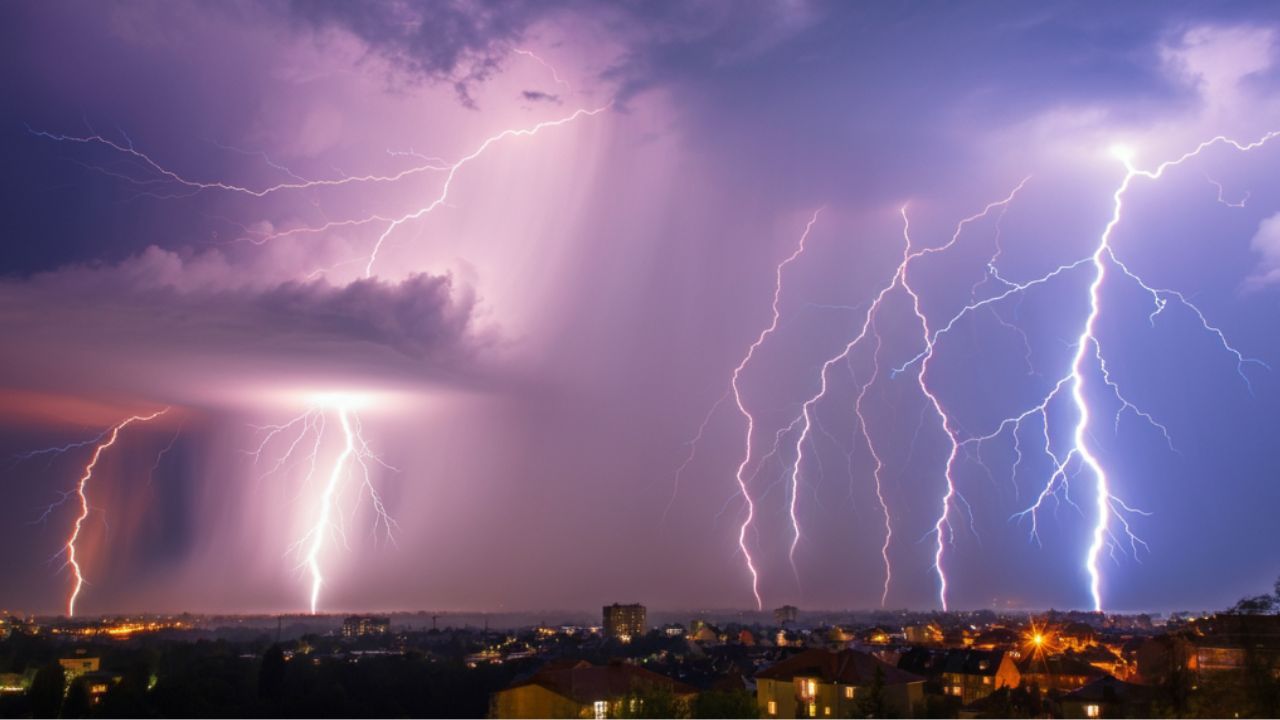Natural Lightning is one of nature’s most captivating displays, a breathtaking force that combines beauty, power, and danger. These dazzling streaks of electricity across the sky have fascinated humans for centuries, celebrated in myths, folklore, and now, modern science. But while many of us admire lightning from a distance, there’s much more beneath its luminous surface to explore and understand.
From the science behind its formation to the cultural context developed around it, lightning tells a story of energy, awe, and inspiration. This guide will take you through the wonders of lightning, its different forms, its effects on nature, and how to stay safe when storms roll in. Whether you’re a nature lover, photographer, or just naturally curious about the marvels of our world, this post will illuminate everything you need to know about lightning.
What is Natural Lightning? A Natural Marvel in the Sky
At its core, lightning is a natural electrical discharge that occurs during storms when atmospheric conditions spark an imbalance of electrical charges. While scientifically categorized as natural physics at work, its sheer magnitude and beauty make lightning a phenomenon that feels almost otherworldly. Lightning forms due to processes we’ll explore shortly, resulting in the streaks of light cutting across the sky, sometimes accompanied by deafening thunder.
The Science Behind Lightning: How It Forms
Understanding how lightning forms can heighten your appreciation for its uniqueness.
The Role of Thunderclouds and Electrical Charges
Most lightning originates in towering cumulonimbus clouds, also known as thunderclouds. Inside these clouds, ice particles collide and create friction, generating electrical charges. Lighter, positively charged particles rise to the top of the cloud, while heavier, negatively charged particles settle at the bottom.
When the difference between the positive and negative charges becomes too great, electricity discharges to relieve the imbalance. This release is what we see as a bolt of lightning. Often, lightning will strike within the cloud itself, but when the electrical charge connects with the ground, it creates a dramatic cloud-to-ground strike.
Different Types of Lightning You Might Witness
Did you know not all lightning is the same? These flashes of brilliance come in various forms, each with unique characteristics and captivating behaviours. Let’s dive into the fascinating world of lightning and explore its many types:
Cloud-to-Ground Lightning
Cloud-to-ground lightning is the most iconic and well-known type of lightning that occurs when an electrical discharge travels between a thundercloud and the Earth’s surface. This type of lightning often appears as a dramatic streak slicing through the sky. It’s responsible for most lightning-related injuries and damage, making it awe-inspiring and dangerous. Cloud-to-ground lightning can also vary in intensity, with some strikes being single flashes and others consisting of multiple rapid discharges that light up the sky.
Cloud-to-Cloud Lightning
Cloud-to-cloud lightning, sometimes called inter-cloud lightning, travels horizontally between two thunderclouds. These strikes can stretch across vast distances, creating impressive light displays illuminating the entire sky. Often seen during intense storms, this type of lightning highlights storm systems’ dynamic and expansive nature, connecting clouds in a spectacular electrical dance.
Intra-Cloud Lightning
The most common type of lightning, intra-cloud lightning, occurs within a single cloud. You’ve likely seen this type during storms, as it resembles flickering or pulsing light trapped inside a cloud bank. Sometimes referred to as “sheet lightning,” it results from electrical charges moving within the cloud. While it might not be as dramatic as cloud-to-ground lightning, intra-cloud lightning contributes significantly to the beauty and intensity of a thunderstorm.
Heat Lightning
Despite its name, heat lightning isn’t actually a different type of lightning. It’s simply lightning that occurs during a distant storm, too far away for the thunder to be audible. You’ll often see it on warm summer nights as a faint, flickering glow on the horizon. Heat lightning is a reminder of the power of distant storms and can create a calm, almost mesmerizing effect as it lights up the night sky.
Ball Lightning
One of the rarest and most mysterious forms of lightning, ball lightning appears as glowing orbs of light that seem to hover or move through the air. These orbs can vary in size, color, and duration, often lasting several seconds or longer. Though reports of ball lightning date back centuries, it remains one of science’s most perplexing phenomena. Some believe vaporized elements in the air cause it, while others think it may be linked to plasma or even electromagnetic effects. Regardless of the cause, ball lightning intrigues researchers and storm enthusiasts alike.
Ribbon and Staccato Lightning
These rarer forms of lightning offer striking variations in appearance. Ribbon lightning occurs during strong winds, causing the channel of the lightning bolt to shift slightly with each return stroke. This creates a ribbon-like effect that appears to drape across the sky. Staccato lightning, however, is brief but incredibly brilliant, with single, powerful flashes that seem to strike and disappear instantly. Both types are less common but no less fascinating, showcasing the diversity of lightning’s behavior in varying atmospheric conditions.
No matter the type, lightning is one of nature’s most captivating phenomena, offering a glimpse into the raw power and beauty of our planet’s storms. From the common to the rare, each form of lightning tells a story about the forces shaping our skies.
The Power and Danger of Lightning in U.S. History
Throughout history, the United States has experienced notable incidents involving lightning, underscoring its immense power and unpredictability. One of the most tragic events occurred in 1977 at the Grand Teton National Park in Wyoming, where a lightning strike killed five climbers on the Grand Teton mountain. This remains one of the deadliest lightning-related incidents in U.S. history. Another significant occurrence occurred in 2005 in Florida, known as the lightning capital of the U.S., when a storm struck a soccer field, injuring several young players and highlighting the importance of safety measures during outdoor activities. These incidents serve as sobering reminders of lightning’s destructive potential and the need for awareness and preparation during storms.
| Safety Measure | Description |
|---|---|
| Seek Shelter | Move indoors or into a hard-top vehicle when thunder roars. |
| Avoid Open Spaces | Stay away from open fields, hilltops, and areas without cover. |
| Steer Clear of Water | Avoid swimming or being near bodies of water during a thunderstorm. |
| Stay Away from Tall Objects | Do not stand near trees, poles, or other tall structures. |
| Disconnect Electronics | Unplug appliances to prevent power surges caused by lightning. |
| Use the 30-30 Rule | If thunder occurs within 30 seconds of seeing lightning, seek shelter immediately and wait at least 30 minutes after the last thunderclap. |
Why Lightning Flashes Are Bright and Powerful
Lightning’s brightness comes from the immense energy it generates. A single bolt can heat the air around it up to 50,000 degrees Fahrenheit, about five times hotter than the sun’s surface. This intense heat causes the light we see and the thunder we hear, creating one of nature’s most powerful sensory spectacles.
Lightning Captured Through Photography
Photographing lightning is a challenging but rewarding pursuit for photographers. The fleeting nature of lightning makes timing critical, but with the right tools and techniques, you can capture awe-inspiring images.
Techniques for Photographing Lightning
- A Stable Tripod: Stability is essential for long exposure shots, as even the slightest movement can lead to blurry photos. Invest in a sturdy tripod to keep your camera steady, especially in windy conditions.
- Use a Wide-Angle Lens: A wide-angle lens is ideal for capturing the vast expanse of the sky and ensuring you don’t miss any part of the dramatic lightning display. This lens also adds depth and perspective to your shots.
- Long Exposure Settings: A shutter speed of several seconds allows the camera to capture the lightning while maintaining a sharp, transparent background. Adjust the exposure settings based on the brightness of the lighting and surrounding light conditions for the best results.
Stunning Locations to Photograph Lightning
From the lightning hotspots of the Great Plains Tornado Alley to spectacular strikes over water in Australia, there’s no shortage of magnificent settings for your photography.
The Dangers of Lightning and How to Stay Safe
While lightning is incredible to photograph and observe, respecting its power is essential.
Top Lightning Safety Tips
- During a Storm: Stay indoors and avoid using water, electronic devices, and standing near windows, as these can pose risks during lightning or strong winds. Unplug appliances if possible to protect them from power surges.
- Outdoors: If caught outside, steer clear of tall objects like trees, poles, or towers, as they are more likely to attract lightning. Get as low to the ground as possible, ideally crouched, and avoid open spaces or bodies of water, which can conduct electricity.
- Plan Ahead: If your activity depends on the weather, always check storm reports, radar maps, and weather forecasts before heading out. This will help you avoid dangerous situations and give you time to adjust your plans if necessary.
Lightning in Human History and Culture
Throughout history, humans have revered lightning. Ancient cultures often associated it with gods and power: Zeus wielded it in Greek mythology, Thor in Norse legends, and Hindu mythology reveres lightning as the weapon of Indra, god of storms. Even today, lightning symbolizes strength, creativity, and transformation in popular culture.
Experiencing Lightning Safely
Want to experience the sheer power of lightning up close? Storm-chasing tours in regions like the Great Plains or even safer lightning-viewing enclosures offer opportunities to marvel at this natural wonder while keeping safety in mind.
Wrapping Up
Lightning is nature’s way of putting on a spectacular show. From its stunning visual displays to its critical role in Earth’s ecosystems, there’s no denying its beauty or power. However, as captivating as it is, lightning also demands respect, reminding us of the delicate balance between nature’s awe-inspiring displays and their inherent risks.
If you’re a lightning enthusiast or storyteller keen to capture these moments in art or science, take the time to learn the science, prepare for safety, and engage with this extraordinary force of nature. Always carry your respect for lightning with you; as you do, you’ll gain a whole new appreciation for its brilliance.
You may read this: 10 Best Homemade Dog Food Recipes for a Happy, Healthy Pup










